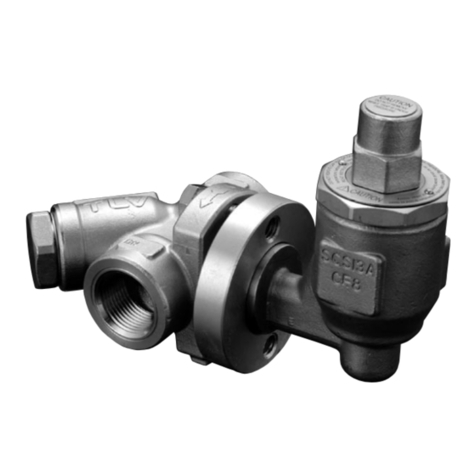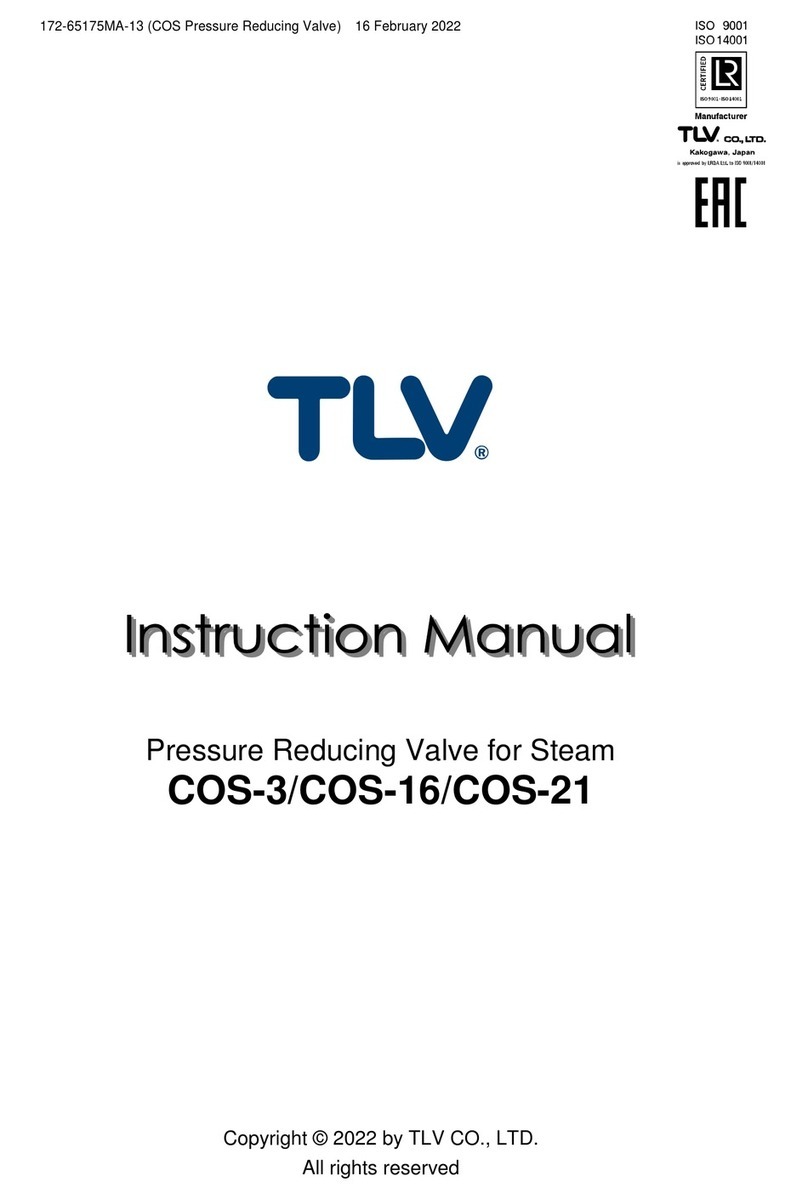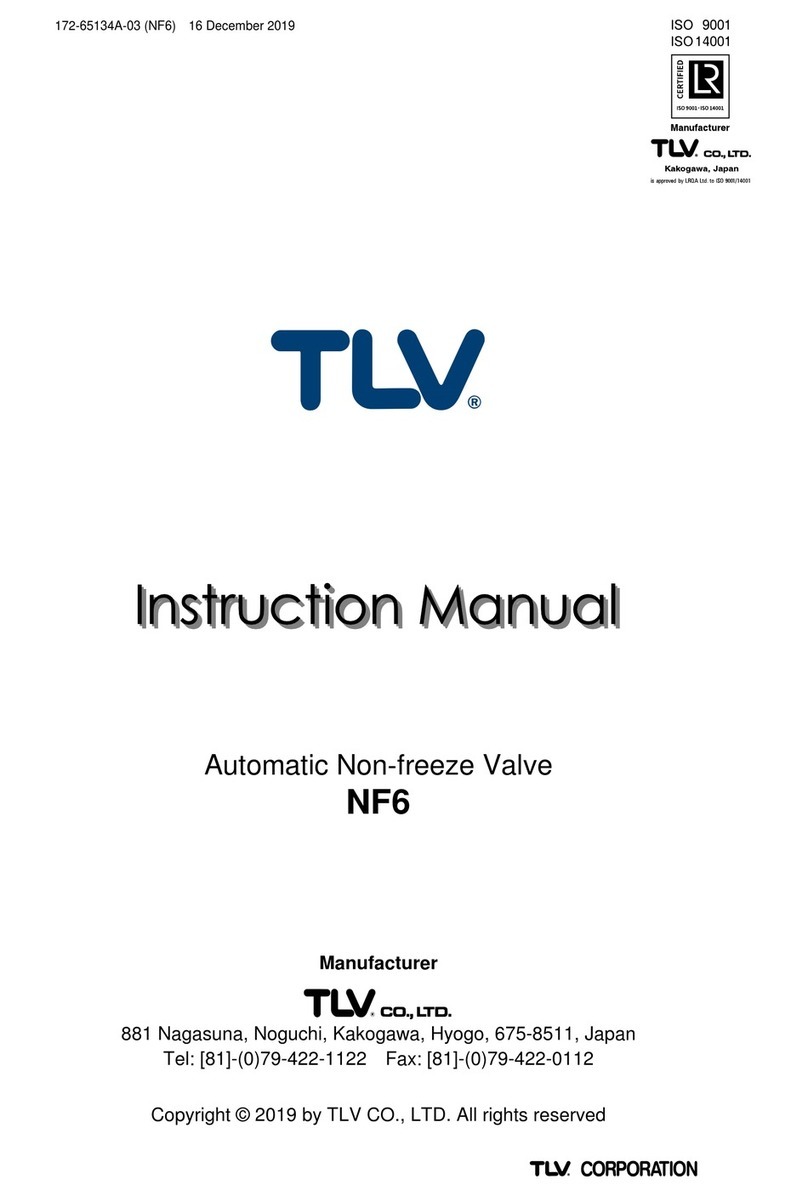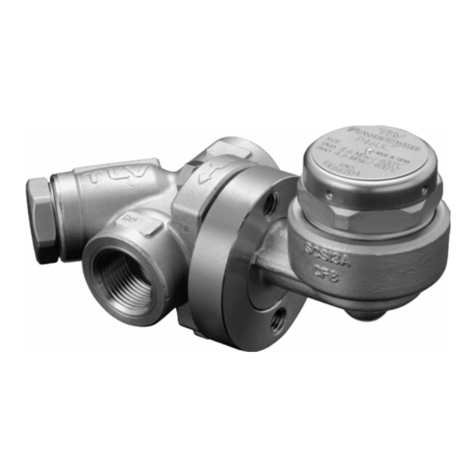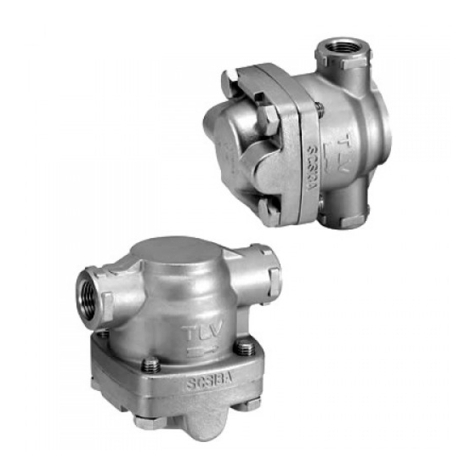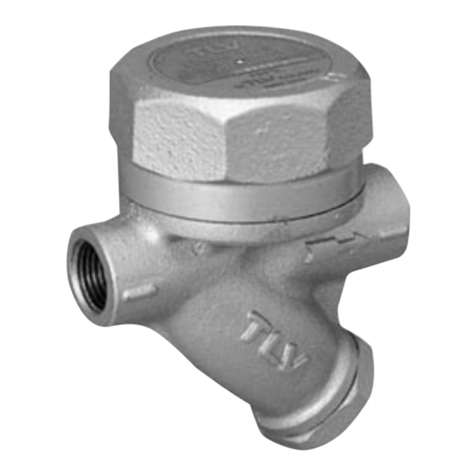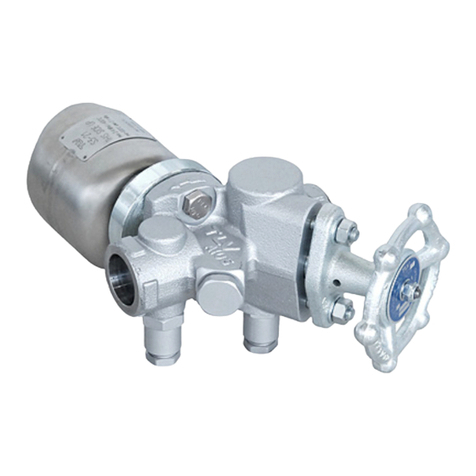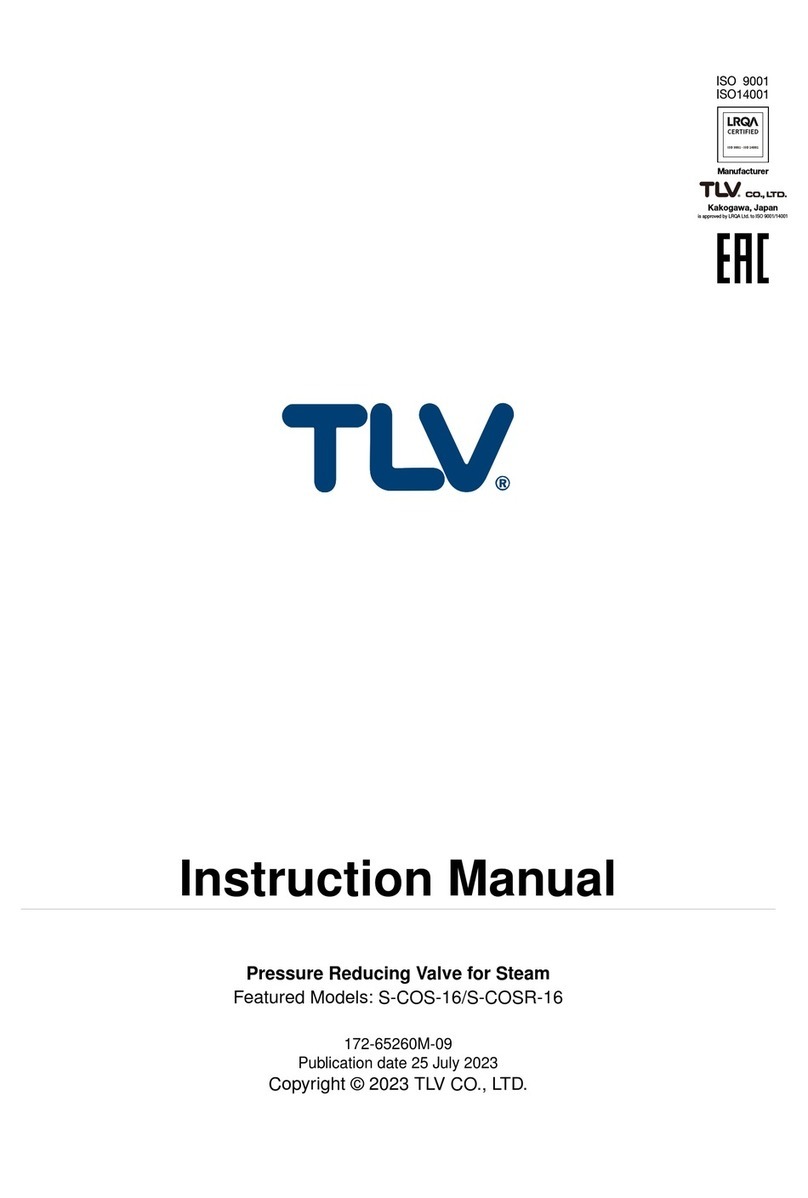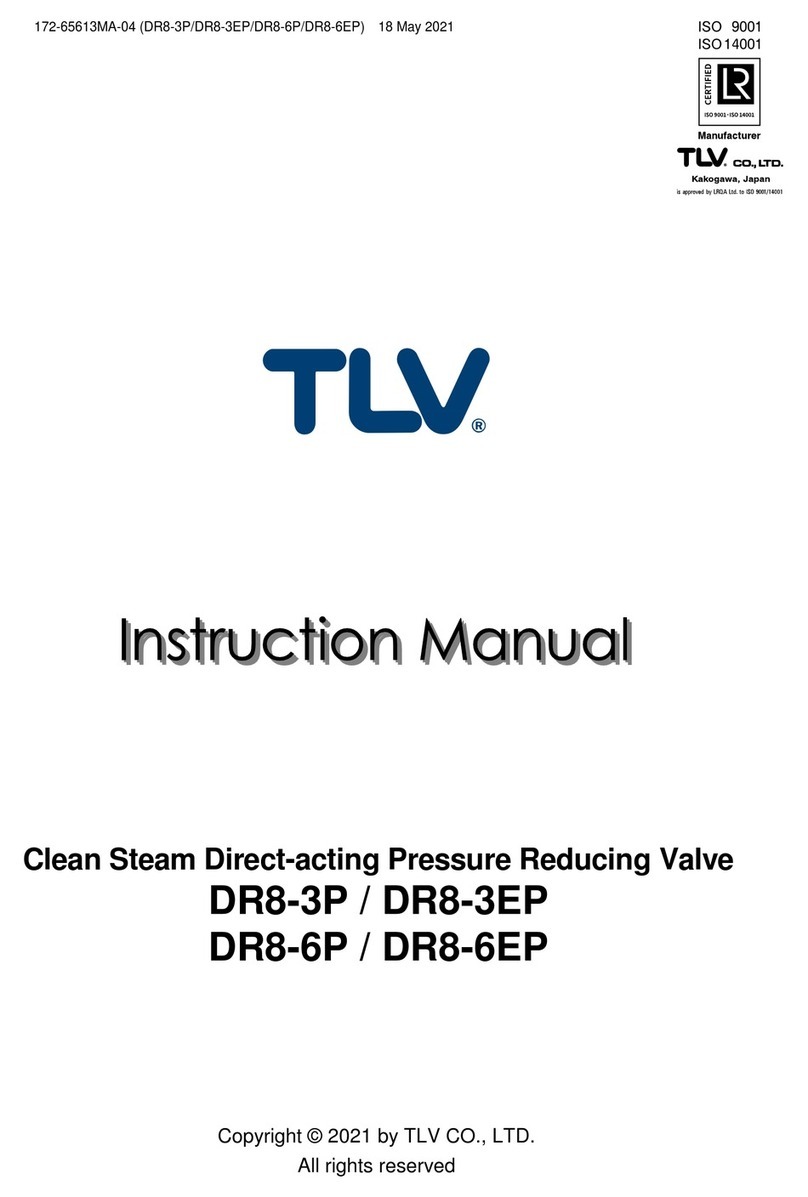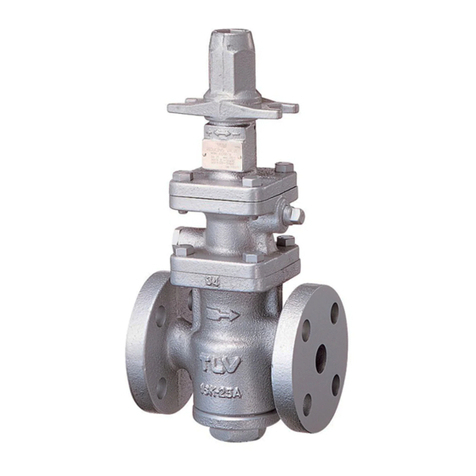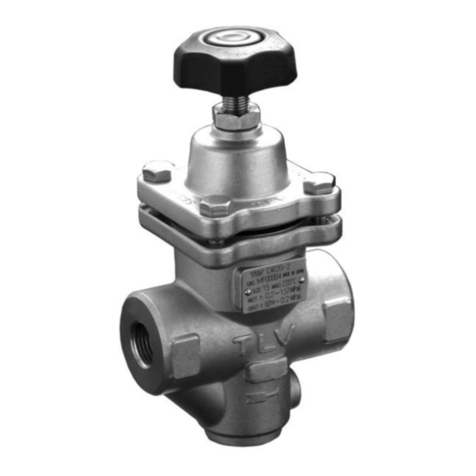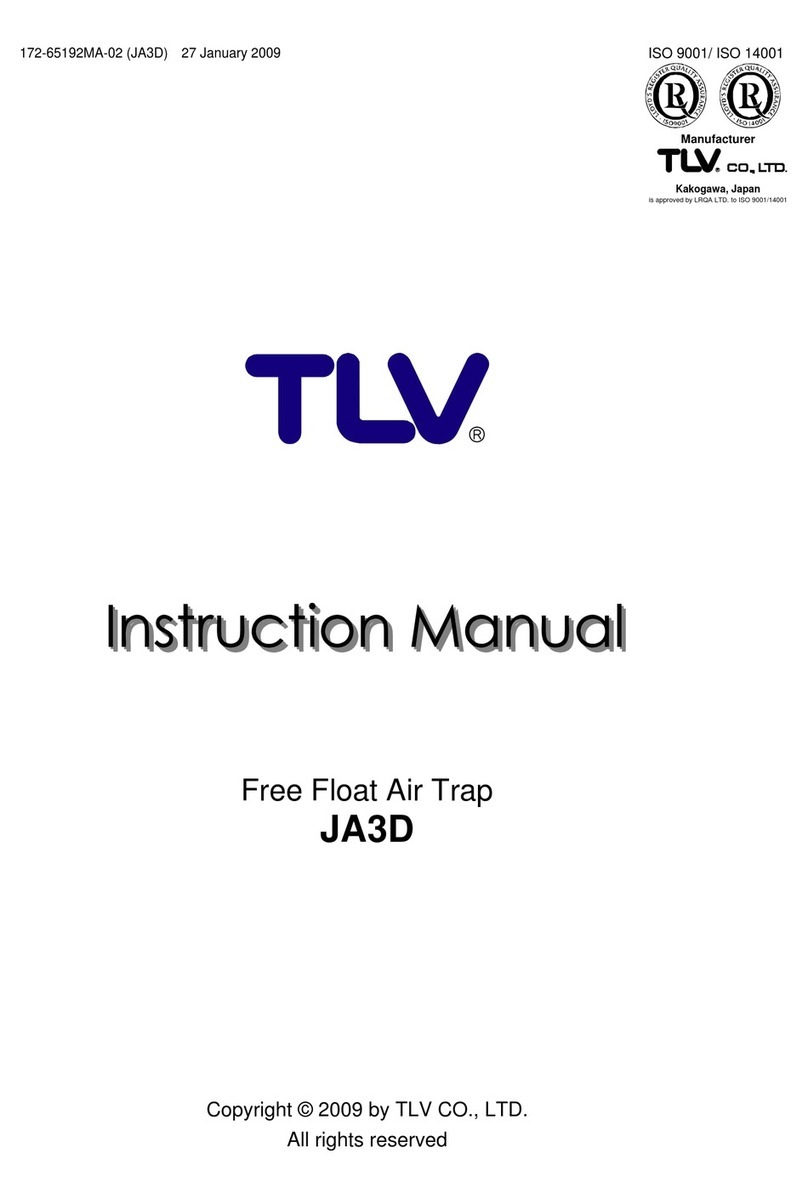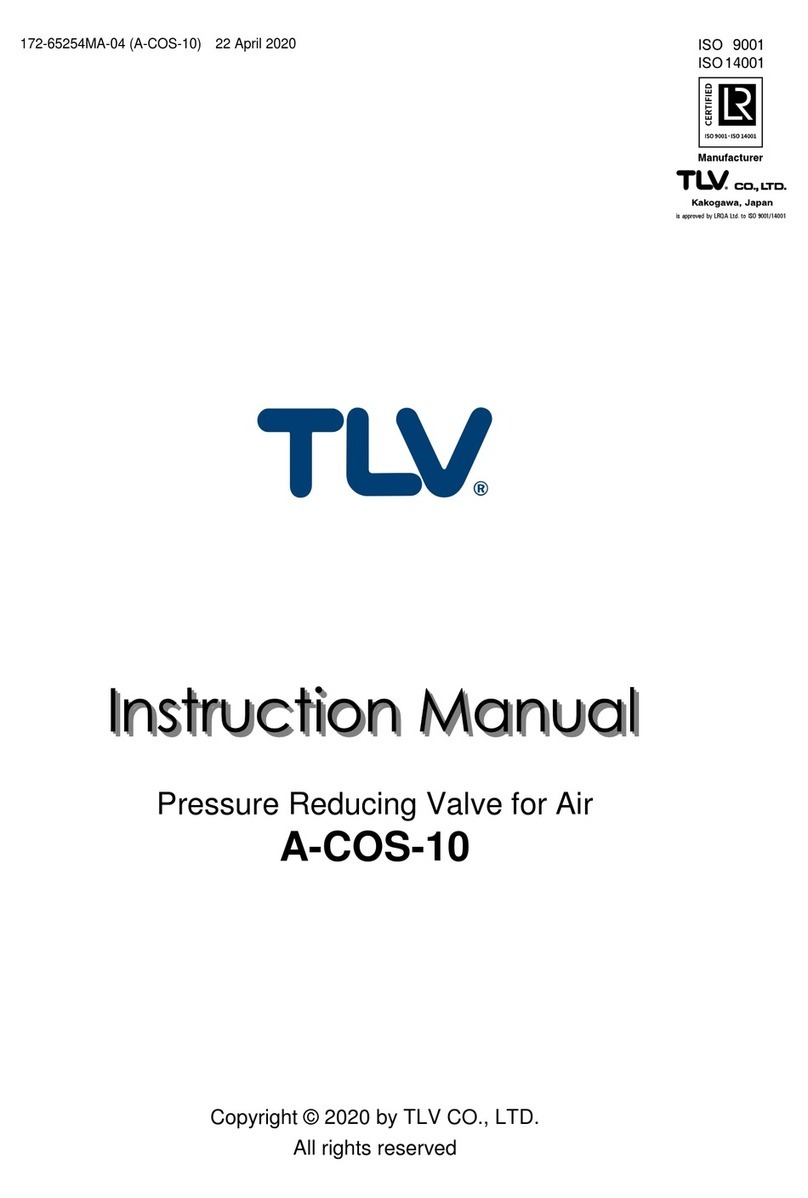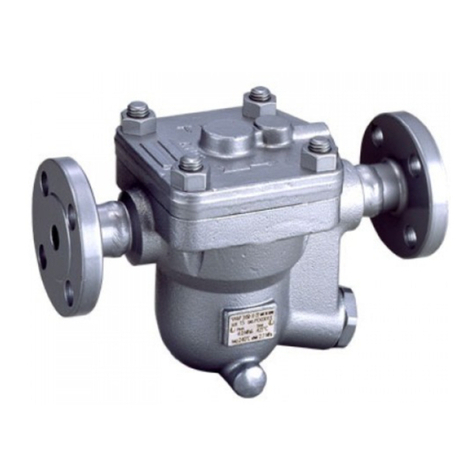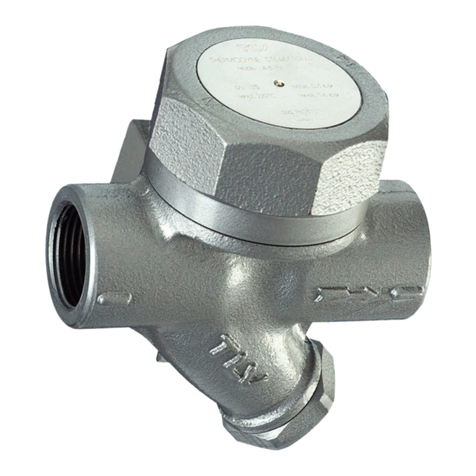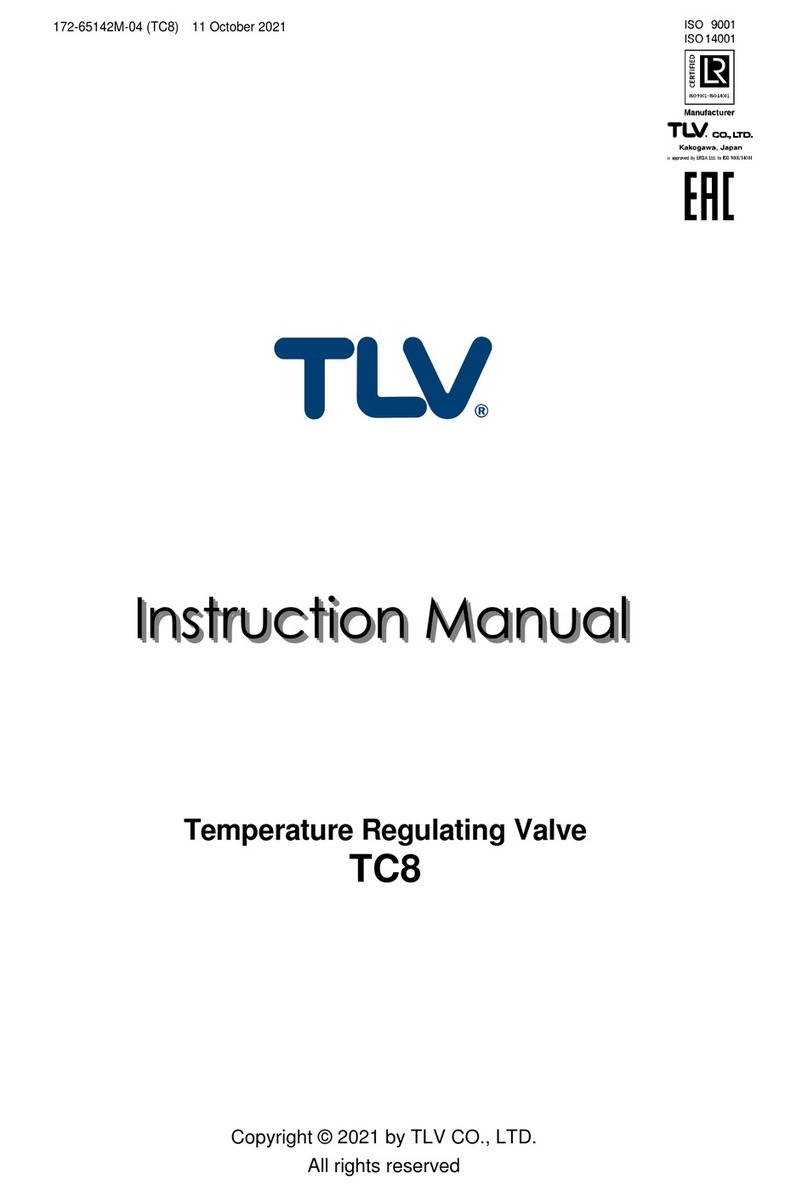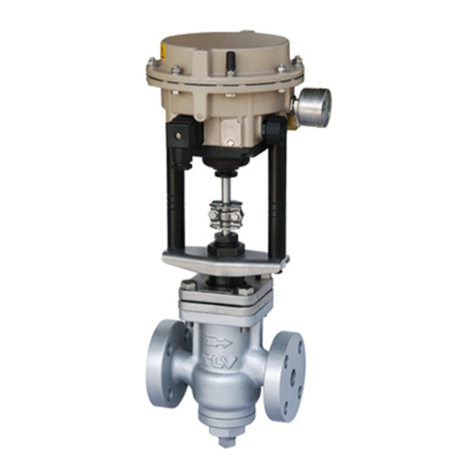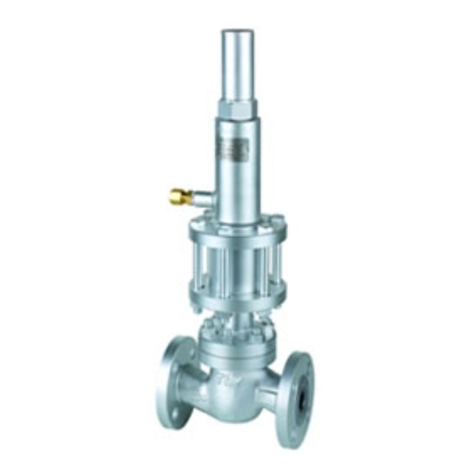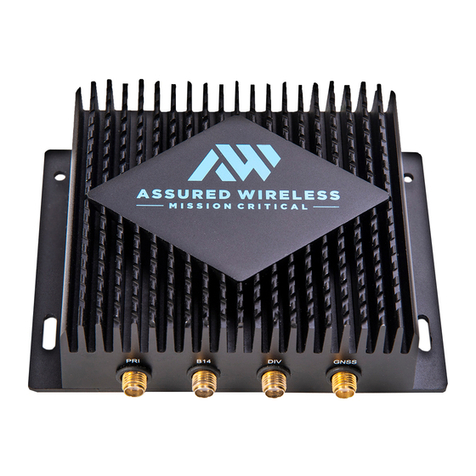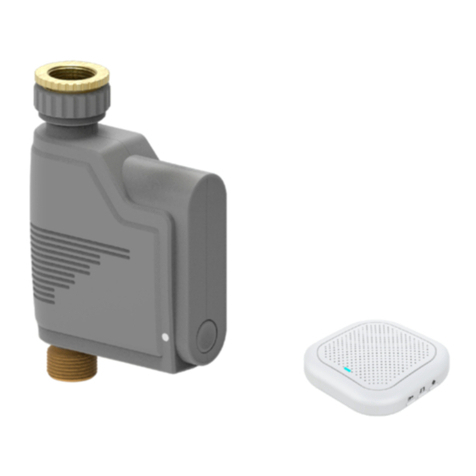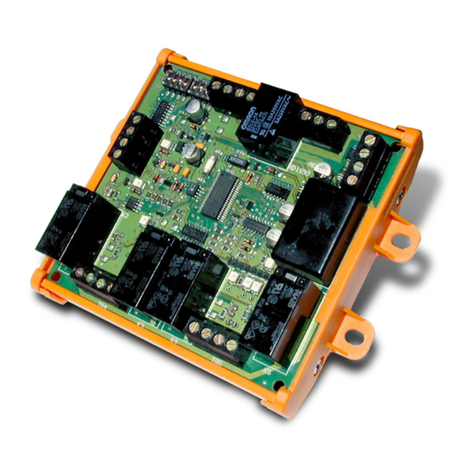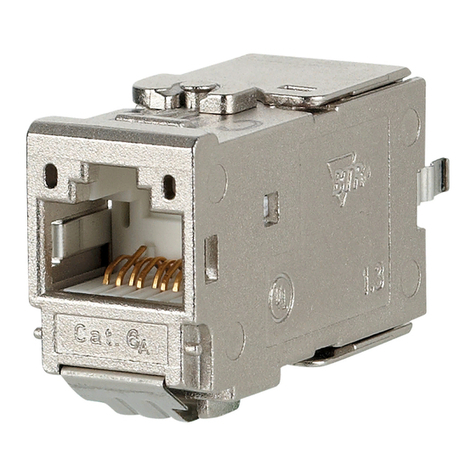TLV CV-COS-20 User manual

172-654741MA-01 (CV-COS-20/CV-COS-20D) 7 October 2021
Electro-Pneumatic Control Valve
with Built-in Separator and Steam Trap
CV-COS-20/CV-COS-20D
(for Valve Unit)
Copyright © 2021 by TLV CO., LTD.
All rights reserved

172-654741MA-01 (CV-COS-20/CV-COS-20D) 7 Oct 2021
1
Contents
Introduction .......................................................................1
Safety Considerations.......................................................2
Specifications....................................................................4
Configuration.....................................................................5
Installation.........................................................................9
Maintenance....................................................................13
Disassembly/Reassembly...............................................14
Troubleshooting...............................................................25
TLV EXPRESS LIMITED WARRANTY...........................26
Service ............................................................................28
Options............................................................................29
Introduction
Thank you for purchasing the TLV electro-pneumatic control valve with built-in
separator and steam trap CV-COS-20/CV-COS-20D.
This product has been thoroughly inspected before being shipped from the
factory. When the product is delivered, before doing anything else, check the
specifications and external appearance to make sure nothing is out of the
ordinary. Also be sure to read this manual carefully before use and follow the
instructions to be sure of using the product properly.
If detailed instructions for special order specifications or options not contained
in this manual are required, please contact TLV for full details.
The TLV electro-pneumatic control valve with built-in separator and steam
trap is a revolutionary product that combines a digital positioner, a diaphragm-
type actuator, a separator and a steam trap. Steam-using equipment can
achieve its intended efficiency only if the steam being used is very dry. Using
steam in which matter such as condensate, scale or types of grease is
entrained can not only result in problems with the steam-using equipment and
in lowered productivity, but can also lead to shortened service life for and
malfunction of the control valve. The CV-COS-20/CV-COS-20D are control
valves that offer a solution for these problems by supplying high-quality steam
to the process and offering maximum productivity.
This instruction manual is intended for use with the model(s) listed on the front
cover. It is needed not only for installation, but also for subsequent
maintenance, disassembly/reassembly and troubleshooting. Please keep it in
a safe place for future reference.
For details of the actuator and the electro-pneumatic digital positioner, refer to
the respective instruction manuals issued by the manufacturer.

172-654741MA-01 (CV-COS-20/CV-COS-20D) 7 Oct 2021
2
Safety Considerations
Read this section carefully before use and be sure to follow the instructions.
Installation, inspection, maintenance, repairs, disassembly, adjustment and valve
opening/closing should be carried out only by trained maintenance personnel.
The precautions listed in this manual are designed to ensure safety and prevent
equipment damage and personal injury. For situations that may occur as a result
of erroneous handling, three different types of cautionary items are used to
indicate the degree of urgency and the scale of potential damage and danger:
DANGER, WARNING and CAUTION.
The three types of cautionary items above are very important for safety: be sure
to observe all of them as they relate to installation, use, maintenance and repair.
Furthermore, TLV accepts no responsibility for any accidents or damage
occurring as a result of failure to observe these precautions.
Symbols
Indicates a DANGER, WARNING or CAUTION item.
Indicates an urgent situation which poses a threat of death or
serious injury
Indicates that there is a potential threat of death or serious injury
Indicates that there is a possibility of injury or equipment / product
damage
NEVER apply direct heat to the float.
The float may explode due to increased internal pressure, causing
accidents leading to serious injury or damage to property and
equipment.
Install properly and DO NOT use this product outside the
recommended operating pressure, temperature and other
specification ranges.
Improper use may result in such hazards as damage to the
product or malfunctions that may lead to serious accidents. Local
regulations may restrict the use of this product to below the
conditions quoted.
DO NOT use the product in excess of the maximum operating
pressure differential.
Such use could make discharge through the steam trap
impossible (blocked).
Use hoisting equipment for heavy objects (weighing
approximately 20 kg (44 lb) or more).
Failure to do so may result in back strain or other injury if the
object should fall.
DO NOT use only the actuator eye bolt when hoisting or
lifting the assembled product.
Failure to observe this precaution may lead to product damage.
Continued on the next page
DANGER
WARNING
CAUTION
WARNING
CAUTION

172-654741MA-01 (CV-COS-20/CV-COS-20D) 7 Oct 2021
3
Take measures to prevent people from coming into direct
contact with product outlets.
Failure to do so may result in burns or other injury from the
discharge of fluids.
When disassembling or removing the product, wait until the
internal pressure equals atmospheric pressure and the
surface of the product has cooled to room temperature.
Disassembling or removing the product when it is hot or under
pressure may lead to discharge of fluids, causing burns, other
injuries or damage.
Be sure to use only the recommended components when
repairing the product, and NEVER attempt to modify the
product in any way.
Failure to observe these precautions may result in damage to the
product and burns or other injury due to malfunction or the
discharge of fluids.
Do not use excessive force when connecting threaded pipes
to the product.
Over-tightening may cause breakage leading to fluid discharge,
which may cause burns or other injury.
Use only under conditions in which no freeze-up will occur.
Freezing may damage the product, leading to fluid discharge,
which may cause burns or other injury.
Use only under conditions in which no water hammer will
occur.
The impact of water hammer may damage the product, leading to
fluid discharge, which may cause burns or other injury.
Make sure the power supply is OFF before carrying out work
on the wiring or inspections involving disassembly.
If such work is carried out with the power on, there is a danger
that equipment may malfunction or electric shock may occur,
leading to injury or other accidents.
Make sure that wiring work requiring a special license is
carried out by qualified personnel.
If carried out by unqualified personnel, overheating or short
circuits leading to injury, fires, damage or other accidents may
occur.
When using this product, NEVER stand close to, or leave
tools anywhere near, moving parts, such as the shaft.
Contact with moving parts or objects becoming caught in moving
parts could lead to injury or damage or other accidents.
CAUTION

172-654741MA-01 (CV-COS-20/CV-COS-20D) 7 Oct 2021
4
Specifications
Install properly and DO NOT use this product outside the recommended
operating pressure, temperature and other specification ranges.
Improper use may result in such hazards as damage to the product or
malfunctions which may lead to serious accidents. Local regulations
may restrict the use of this product to below the conditions quoted.
CAUTION
DO NOT use the product in excess of the maximum operating pressure
differential; such use could make discharge impossible (blocked).
CAUTION
Use only under conditions in which no freeze-up will occur. Freezing
may damage the product, leading to fluid discharge, which may cause
burns or other injury.
CAUTION
Refer to the product nameplate for detailed specifications.
Valve Section
Actuator Section
*Maximum allowable pressure (PMA) and maximum allowable temperature (TMA) are
PRESSURE SHELL DESIGN CONDITIONS, NOT OPERATING CONDITIONS.
**Valve No. is displayed for products with options. This item is omitted from the
nameplate when there are no options.
Model
NominalDiameter
Maximum Allowable*
Pressure*
Maximum Operating
Pressure
Maximum Allowable
Temperature (TMA)*
Maximum Operating
Temperature (TMO)
Valve No.**
Serial No.
Operating Direction
Model
NominalDiameter
Maximum Allowable
Pressure*
Maximum Operating
Pressure
Maximum Allowable
Temperature (TMA)*
Maximum Operating
Temperature (TMO)
Valve No.**
Serial No.
Spring Range Pressure supplied to
Positioner
Valve Material
Valve Characteristic
Stroke Cv Value

172-654741MA-01 (CV-COS-20/CV-COS-20D) 7 Oct 2021
5
Configuration
CV-COS-20
Sizes 15 to 50 mm (1/2to 2 in)
No.
Description
A*
B*
C*
D*
1
Main Body
2
Separator Body
3
Trap Cover
4
Separator Screen
5
Separator
6
Wave Spring
7
Separator Body Gasket
8
Separator Body Bolt
9
Float Cover
10
Float
11
Float Cover Bolt
12
Washer
13
Trap Cover Gasket
14
Trap Valve Seat Gasket
15
Trap Valve Seat
16
Trap Cover Bolt
17
Valve Bonnet
18
Stem Connector Nut
19
Locknut
20
Guide Bushing
21
Stuffing Box V-ring
Packing
22
Stuffing Box Washer
23
Stuffing Box Spring
24
Plug
25
Valve Bonnet Gasket
26
Valve Bonnet Bolt
27
Valve Bonnet Nut
28
Valve Seat
29
Nameplate
30
Travel Indicator Scale
31
Stem Bracket Clamp
32
Actuator Stem
33
Fixing Nut
*Replacement parts are available only in
the following kits:
A = Maintenance Kit
B = Repair Kit
C = Repair Kit for Trap Valve Seat
D = Float
Actuator
Section
Positioner
Section
Valve Section
Eye Bolt
Actuator area
700 cm2(1.08 in2) only

172-654741MA-01 (CV-COS-20/CV-COS-20D) 7 Oct 2021
6
CV-COS-20
Sizes 65 to 100 mm (21/2to 4 in)
No.
Description
A*
B*
C*
D*
1
Main Body
2
Separator Body
3
Trap Cover
4
Separator Screen
5
Separator
6
Wave Spring
7
Separator Body Gasket
8
Separator Body Bolt
9
Float Cover
10
Float
11
Float Cover Bolt
12
Washer
13
Trap Cover Gasket
14
Trap Valve Seat Gasket
15
Trap Valve Seat
16
Trap Cover Bolt
17
Valve Bonnet
18
Stem Connector Nut
19
Locknut
20
Guide Bushing
21
Stuffing Box V-ring
Packing
22
Stuffing Box Washer
23
Stuffing Box Spring
24
Plug
25
Valve Bonnet Gasket
26
Valve Bonnet Bolt
27
Valve Bonnet Nut
28
Valve Seat
29
Nameplate
30
Travel Indicator Scale
31
Stem Bracket Clamps
32
Actuator Stem
33
Fixing Nut
34
Baffle Nut
35
Baffle
*Replacement parts are available only in
the following kits:
A = Maintenance Kit
B = Repair Kit
C = Repair Kit for Trap Valve Seat
D = Float

172-654741MA-01 (CV-COS-20/CV-COS-20D) 7 Oct 2021
7
CV-COS-20D (Optional)
Sizes 15 to 50 mm (1/2to 2 in)
No.
Description
A*
B*
C*
D*
1
Main Body
2
Separator Body
3
Trap Cover
4
Separator Screen
5
Separator
6
Wave Spring
7
Separator Body Gasket
8
Separator Body Bolt
9
Float Cover
10
Float
11
Float Cover Bolt
12
Washer
13
Trap Cover Gasket
14
Trap Valve Seat Gasket
15
Trap Valve Seat
16
Trap Cover Bolt
17
Valve Bonnet
18
Stem Connector Nut
19
Locknut
20
Guide Bushing
21
Stuffing Box V-ring
Packing
22
Stuffing Box Washer
23
Stuffing Box Spring
24
Plug
25
Valve Bonnet Gasket
26
Valve Bonnet Bolt
27
Valve Bonnet Nut
28
Valve Seat
29
Nameplate
30
Travel Indicator Scale
31
Stem Bracket Clamps
32
Actuator Stem
33
Fixing Nut
*Replacement parts are available only in
the following kits:
A = Maintenance Kit
B = Repair Kit
C = Repair Kit for Trap Valve Seat
D = Float
Actuator
Section
Positioner
Section
Valve Section

172-654741MA-01 (CV-COS-20/CV-COS-20D) 7 Oct 2021
8
CV-COS-20D (Optional)
Sizes 65 to 100 mm (21/2to 4 in)
No.
Description
A*
B*
C*
D*
1
Main Body
2
Separator Body
3
Trap Cover
4
Separator Screen
5
Separator
6
Wave Spring
7
Separator Body Gasket
8
Separator Body Bolt
9
Float Cover
10
Float
11
Float Cover Bolt
12
Washer
13
Trap Cover Gasket
14
Trap Valve Seat Gasket
15
Trap Valve Seat
16
Trap Cover Bolt
17
Valve Bonnet
18
Stem Connector Nut
19
Locknut
20
Guide Bushing
21
Stuffing Box V-ring
Packing
22
Stuffing Box Washer
23
Stuffing Box Spring
24
Plug
25
Valve Bonnet Gasket
26
Valve Bonnet Bolt
27
Valve Bonnet Nut
28
Valve Seat
29
Nameplate
30
Travel Indicator Scale
31
Stem Bracket Clamps
32
Actuator Stem
33
Fixing Nut
34
Baffle Nut
35
Baffle
*Replacement parts are available only in
the following kits:
A = Maintenance Kit
B = Repair Kit
C = Repair Kit for Trap Valve Seat
D = Float
Actuator
Section
Positioner
Section
Valve Section
Eye Bolt
Actuator area
700 cm2(1.08 in2) only

172-654741MA-01 (CV-COS-20/CV-COS-20D) 7 Oct 2021
9
Installation
Install properly and DO NOT use this product outside the recommended
operating pressure, temperature and other specification ranges.
Improper use may result in such hazards as damage to the product or
malfunctions which may lead to serious accidents. Local regulations
may restrict the use of this product to below the conditions quoted.
CAUTION
Use hoisting equipment for heavy objects (weighing approximately
20 kg (44 lb) or more). Failure to do so may result in back strain or other
injury if the object should fall.
CAUTION
DO NOT use only the actuator eye bolt when hoisting or lifting the
assembled product. Failure to observe this precaution may lead to
product damage.
CAUTION
Take measures to prevent people from coming into direct contact with
product outlets. Failure to do so may result in burns or other injury from
the discharge of fluids.
CAUTION
Do not use excessive force when connecting threaded pipes to the
product. Over-tightening may cause breakage leading to fluid
discharge, which may cause burns or other injury.
CAUTION
Installation, inspection, maintenance, repairs, disassembly and adjustment and valve
opening/closing should be carried out only by trained maintenance personnel.
Check to make sure that the piping where the product is to be installed is constructed
properly. If the piping is not correctly constructed, the valve may not perform optimally.
1. Blowdown
Before installing the product, be sure to blow down all piping
thoroughly.
If this is not possible, perform a blowdown using the bypass valve.
Blowdown is especially important for newly installed piping or
after the system has been shut down for a long period of time.
2. Installing the actuator section
The eye bolt welded onto the upper part of the diaphragm
housing is for mounting and removing the actuator. Do not lift the
assembled product using only the eye bolt.
(See Fig. 1)
3. Installing the control valve
Lift the assembled product using hoisting equipment such as cranes
and forklifts. Do not lift the assembled product using only the eye
bolt. (See Fig. 2)
Fig. 1
Hoisting the
actuator
Fig. 2
Hoisting the
control valve

172-654741MA-01 (CV-COS-20/CV-COS-20D) 7 Oct 2021
10
4. Removing any protective caps and seals
Before installation, be sure to remove all protective seals and caps. (Found in
three locations, on the product inlet and outlets.)
CV-COS-20
CV-COS-20D
5. Installation angle
Install the product so that the arrow mark on the valve body points horizontallyin
the direction of steam flow, and it should be installed horizontally in the piping
with the actuator at the top. Allowable inclination is 10 degrees in the fore-aft
direction and 15 degrees in the plane perpendicular to the steam flow line.
CV-COS-20
CV-COS-20D
6. Piping support
Install the product, paying attention to avoid excessive load, bending and
vibration. Support the inlet and outlet pipes securely.
CV-COS-20
CV-COS-20D
① ②
③
① ②
③

172-654741MA-01 (CV-COS-20/CV-COS-20D) 7 Oct 2021
11
7. Maintenance space
Leave sufficient space for maintenance, inspection and repair. (Units: mm)
CV-COS-20
CV-COS-20D
8. Trap outlet pipe
For ease of maintenance, installation of a union connection is recommended
for the trap outlet pipe.
Connect the outlet pipe to a condensate return line, or
extend it to a trench. In the case of the latter, make
sure the end of the pipe is above the waterline. (Dirt
and water may be sucked up by the vacuum formed
during trap closure and system shutdown.) If the end
must be underwater, make sure the piping has a
small hole, as shown in the drawing below.
9. Accessories
Always install a shut-off valve, pressure gauge and bypass lines at both inlet and
outlet. Ball valves, which will not retain condensate, are recommended for inlet
and outlet shut-off valves. The bypass pipe should be at least 1/2 of the size of
the inlet (primary side) pipe.
10. Installation environment
Check the installation environment to make sure that the ambient temperature
does not exceed the actuator ambient temperature limit and that no corrosive
gasses are present.
11. Installing the shut-off valve
Though the product adequately performs the function of a shut-off valve initially,
extended use will result in a drop in its performance as an isolation valve. Be sure
to install a separate shut-off or automatic valve if complete isolation is needed.
400
(16)
400
(16)
400
(16)
400
(16)
300
(12)
100
(4)
100
(4)
100 (4)
300
(12)
100
(4)
100
(4)
100 (4)
110 to 190 (41/2to 71/2)
Small hole
15 mm
(1/2in)

172-654741MA-01 (CV-COS-20/CV-COS-20D) 7 Oct 2021
12
12. Installing the safety valve
When installing a safety valve, be sure not to install it between the control valve
and the shut-off valve. It must be installed near the equipment it is to protect,
on the outlet side of the shut-off valve.
13. Avoid foreign matter and water hammer
Do not install in locations in the piping where foreign matter accumulates or
where impact from water pressure (water hammer) occurs.
14. Piping gaskets
Be careful that the piping gaskets do not protrude outside the inner bore of the
flange. The type of medium being used and the temperature must be taken into
account in order to select a gasket of a suitable material.
15. Air line blowdown/purge
Before connecting the air lines for the motive air that is to be piped to the
actuator, blow out the air in the lines to purge any dirt, foreign matter, oil or water
from inside of the piping.
16. Quality of motive air
Supply to the actuator only clean air that does not contain water, oil or foreign
matter.
To prevent malfunction due to contamination of the air supply, installation of the
optional air filter regulator (5 µm filter) and mist separator (0.3 µm filter) as a set
is recommended.
If air quality results in operation failure, the entire actuator unit (including the
integrated positioner) must be replaced.
If there is a problem in operation, determine the cause using the “Troubleshooting”
section in this manual.
Safety Valve
Safety Valve

172-654741MA-01 (CV-COS-20/CV-COS-20D) 7 Oct 2021
13
Maintenance
Take measures to prevent people from coming into direct contact with
product outlets. Failure to do so may result in burns or other injury from
the discharge of fluids.
CAUTION
When disassembling or removing the product, wait until the internal
pressure equals atmospheric pressure and the surface of the product
has cooled to room temperature. Disassembling or removing the
product when it is hot or under pressure may lead to discharge of fluids,
causing burns, other injuries or damage.
CAUTION
Be sure to use only the recommended components when repairing the
product, and NEVER attempt to modify the product in any way. Failure to
observe these precautions may result in damage to the product or burns
or other injury due to malfunction or the discharge of fluids.
CAUTION
Operational Check
An inspection of the following items should be done on a daily basis to determine
whether the product is operating properly or has failed. Periodically (at least
biannually) the operation should also be checked.
In the event of failure (malfunction), also refer to the "Troubleshooting" section for
remedies.
Inspection Item
Inspection Points
Remedy for Failure (Malfunction)
Leakage from valve
(when the valve is
closed)
Visual inspection orstethoscope
inspection; is the outlet side pressure
or temperature elevated, or is there
the sound of the medium flowing?
Adjust the zero/span; if that does
not solve the problem, replace
with a new valve plug & stem
and valve seat
Leakage from gland
area
Visual inspection; is fluid leaking
from the gap between the guide
bushing and the valve stem, or
are there signs it has leaked
previously?
Coat the guide bushing and the
valve stem with grease; if that
does not solve the problem,
replace with new V-ring packing
Leakage from the
gaskets between
any pressurized
parts
Visual inspection; is fluid leaking
from the gasket areas on
pressurized parts?
Apply additional tightening (refer
to recommended torque) or
replace with new gaskets
Leakage from
pressurized parts
such as body and
valve bonnet
Visual inspection; is fluid leaking
from pressurized parts such as
the body or valve bonnet?
Replace any pressurized parts at
leak locations
Leakage from the
trap area
Visual inspection or stethoscope
inspection; is live steam being
discharged from the trap outlet
piping, or can the sound of a
steam leak be heard?
Clean the sealing surface of the
trap valve seat or replace the
valve seat
Parts Inspection
When parts have been removed, use the following table to inspect the parts and
replace any that are found to be defective.
Inspection Item
Gasket(s): Check for warping and damage (Graphite gaskets MUST be replaced if
disassembled)
Stuffing Box V-ring Packing: Check for warping or damage
Valve Plug & Stem, Valve Seat: Check for damage or scratches
Separator Screen: Check for clogging and corrosion
Trap Valve Seat: Check for scratches, dents, etc.
Float: Check for scratches, dents, etc.

172-654741MA-01 (CV-COS-20/CV-COS-20D) 7 Oct 2021
14
Disassembly/Reassembly
When disassembling or removing the product, wait until the internal
pressure equals atmospheric pressure and the surface of the product
has cooled to room temperature. Disassembling or removing the
product when it is hot or under pressure may lead to discharge of fluids,
causing burns, other injuries or damage.
CAUTION
Be sure to use only the recommended components when repairing the
product, and NEVER attempt to modify the product in any way. Failure to
observe these precautions may result in damage to the product or burns
or other injury due to malfunction or the discharge of fluids.
CAUTION
Use the following procedures to remove components. Use the same procedures in
reverse to reassemble. (Installation, inspection, maintenance, repairs, disassembly,
adjustment and valve opening/closing should be carried out only by trained
maintenance personnel.)
For details of the actuator and the electro-pneumatic digital positioner, refer to the
respective instruction manuals issued by the manufacturer.
Refer to “Disassembling/Reassembling the Valve and Actuator Sections” on the
following page when removing the actuator section.
Consult the table of tightening torques when mounting the actuator section on the
valve section.
NOTE: Be sure to coat all threaded portions of the valve seat and bolts with anti-seize.
Removing/Reattaching the Actuator (Positioner)
Part
During Disassembly
During Reassembly
Stem Bracket Bolt
Loosen stem bracket bolts and
remove the stem bracket clamps
connecting the actuator stem and
stem connector nut
Consult the table of tightening
torques and tighten to the proper
torque
―
When an input signal is sent to
the positioner, the actuator stem
will ascend.
―
Fixing Nut
Remove the fixing nut connecting
the actuator and the valve bonnet
while keeping the actuator stem in
the raised position
Consult the table of tightening
torques and tighten to the proper
torque
Fixing Nut
Stem Bracket Clamps
Valve Bonnet

172-654741MA-01 (CV-COS-20/CV-COS-20D) 7 Oct 2021
15
Detaching/Reattaching the Stem Connector Nut and Locknut
Part
During Disassembly
During Reassembly
Locknut,
Stem Connector
Nut
Loosen the locknut by holding the
stem connector nut with a
spanner
DO NOT disassemble with the
valve plug in contact with the valve
seat, make sure that the valve plug
is slightly suspended
Do not supply air to the actuator at
a pressure of 0.6 MPaG (85 psig, 6
barg) or more.
Consult the table of tightening
torques and tighten to the proper
torque
If the instructions given are not
followed when reassembly is
carried out, malfunctions such as
insufficient lift (insufficient flow
capacity) and/or insufficient closing
force (valve leakage) may result:
give the proper attention to the
adjustment procedure
NOTE: Be careful not to pinch your fingers between the valve stem and actuator stem!
Stem Connector Nut
Locknut

172-654741MA-01 (CV-COS-20/CV-COS-20D) 7 Oct 2021
16
Instructions for Reverse Action (Air to Open, Fail Closed) Stroke Adjustment
1. Make sure that the valve plug is securely seated in the valve seat. (Fig. 1)
2. Supply the maximum air pressure (0.33 MPaG (48 psig, 3.3 barg)) of the spring
range (e.g. 0.09 to 0.33 MPaG (13 to 48 psig, 0.9 to 3.3 barg)) to the actuator.
(Refer to the nameplate, drawing or specification data sheet (SDS) for the spring
range.)
With the actuator stem raised, screw the locknut and stem connector nut into the
guide bushing as far as possible without touching the valve stem. (Fig. 2)
3. Supply the lower limit air pressure (0.09 MPaG (13 psig, 0.9 barg)) of the spring
range (e.g. 0.09 to 0.33 MPaG (13 to 48 psig, 0.9 to 3.3 barg)) to the actuator.
The actuator stem will descend. (Fig. 3)
NOTE: Be careful not to pinch your fingers.
4. Turn the stem connector nut until it comes into contact with the actuator stem,
and turn the stem connector nut a further 1/4 turn to contact the actuator stem.
Make sure that the valve plug is seated in the valve seat.
Hold the stem connector nut with a spanner and tighten the locknut with a
proper torque. (Fig. 4)
5. Shut off the air supply to the actuator.
NOTE: Be careful not to pinch your fingers.
6. Secure the stem connector nut and the actuator stem with the stem bracket
clamps. Make sure to adjust the stem bracket clamps to 0% (fully closed) on the
travel indicator scale. (Fig. 5)
Fig. 1
Fig. 2
Fig. 3
Fig. 4
Fig. 5
Actuator Stem
Valve Stem
Locknut
Stem
Connector Nut
Actuator Stem
ascends
Actuator Stem
descends
NOTE:
Be careful
not to pinch
your fingers
Stem
Connector Nut
Locknut
Stem Bracket Clamps Travel Indicator Scale
Travel Indicator Scale
Mounting Bolt
Travel Indicator Scale
Mounting Bolt

172-654741MA-01 (CV-COS-20/CV-COS-20D) 7 Oct 2021
17
Instructions for Direct Action (Air to Close, Fail Open) Stroke Adjustment
1.Make sure that the valve plug is securely seated in the valve seat. (Fig. 1)
2. Screw the locknut and stem connector nut onto the valve stem until they are just
short of coming into contact with the guide bushing. (Fig. 2)
3. Supply the upper limit air pressure (0.1 MPaG (15 psig, 1.0 barg)) of the spring
range (e.g. 0.02 to 0.1 MPaG (3 to 15 psig, 0.2 to 1.0 barg)) to the actuator. The
actuator stem will descend. (Fig. 3)
NOTE: Be careful not to pinch your fingers.
4. Turn the stem connector nut until it comes into contact with the actuator stem,
and turn the stem connector nut a further 1/4 turn to contact the actuator stem.
Make sure that the valve plug is seated in the valve seat. Hold the stem
connector nut securely in place with a tool such as a spanner and tighten the
locknut. (Fig. 4)
5. Shut off the air supply to the actuator.
NOTE: Be careful not to pinch your fingers.
6. Secure the stem connector nut and the actuator stem with the stem bracket
clamps. Make sure to adjust the stem bracket clamps to 100% (fully open) on
the travel indicator scale. (Fig. 5)
Fig. 1
Fig. 2
Fig. 3
Fig. 4
Fig. 5
Actuator Stem
Valve Stem
Locknut
Stem
Connector Nut
Actuator Stem
ascends
Actuator Stem
descends
NOTE:
Be careful
not to pinch
your fingers
Actuator Stem
ascends
Pull up the stem
connector nut and
the valve stem
Stem Bracket
Clamps Travel Indicator Scale
Travel Indicator Scale
Mounting Bolt
Travel Indicator Scale
Mounting Bolt

172-654741MA-01 (CV-COS-20/CV-COS-20D) 7 Oct 2021
18
Disassembling/Reassembling the Gland and its Components
In the procedure below, first partially loosen the guide bushing and then remove the
valve plug & stem before removing the other parts. (The procedure is most easily
performed if the bushing is loosened while it is attached to the valve body.)
Part
During Disassembly
During Reassembly
Guide Bushing
Remove with a socket wrench
Consult the table of tightening
torques and tighten to the proper
torque
Stuffing Box
V-ring Packing
Pull up and out
Make sure to reassemble the V-ring
packing in the proper orientation;
coat the groove with heat-resistant
silicon grease; reattach the V-ring
packing with the grooves facing
downward
Stuffing Box
Washer/
Stuffing Box
Spring
Pull up and out
Reinsert
Guide Bushing
Stuffing Box V-Ring Packing
Stuffing Box Washer
Stuffing Box Spring
Cut view of
Stuffing Box
V-Ring Packing

172-654741MA-01 (CV-COS-20/CV-COS-20D) 7 Oct 2021
19
Disassembling/Reassembling of the Valve Bonnet Section
Part
During Disassembly
During Reassembly
Nut
Remove with a socket
wrench
Consult the table of tightening torques and
tighten to the proper torque, making sure to
tighten evenly
Valve Bonnet
Pull up and off, being
careful not to damage the
valve plug or valve seat
Reattach, being careful not to damage the
valve plug or valve seat; insert the bonnet
securely into the gasket housing without tilting;
check to make sure that there is no catching or
biting when the valve plug is seated in the
valve seat, and that the valve plug is securely
seated in the valve seat
Valve Bonnet
Gasket
Remove the gasket and
clean sealing surfaces
Replace with a new gasket; make sure that the
gasket does not protrude from the housing in
the body; DO NOT coat with anti-seize
Nut
Valve Bonnet
Gasket
Valve Plug
Valve Bonnet
Section
Body Section
This manual suits for next models
1
Table of contents
Other TLV Control Unit manuals
Popular Control Unit manuals by other brands

Lincoln Electric
Lincoln Electric LACI Service schematic
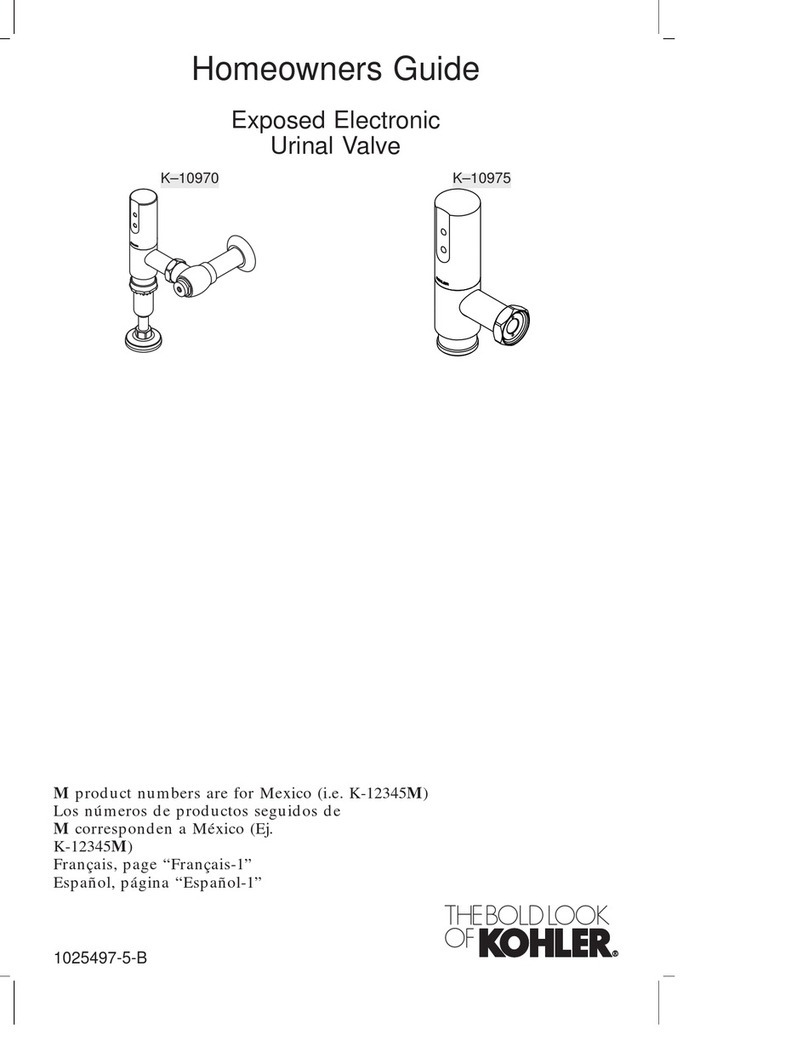
Kohler
Kohler K-10970 Homeowner's guide
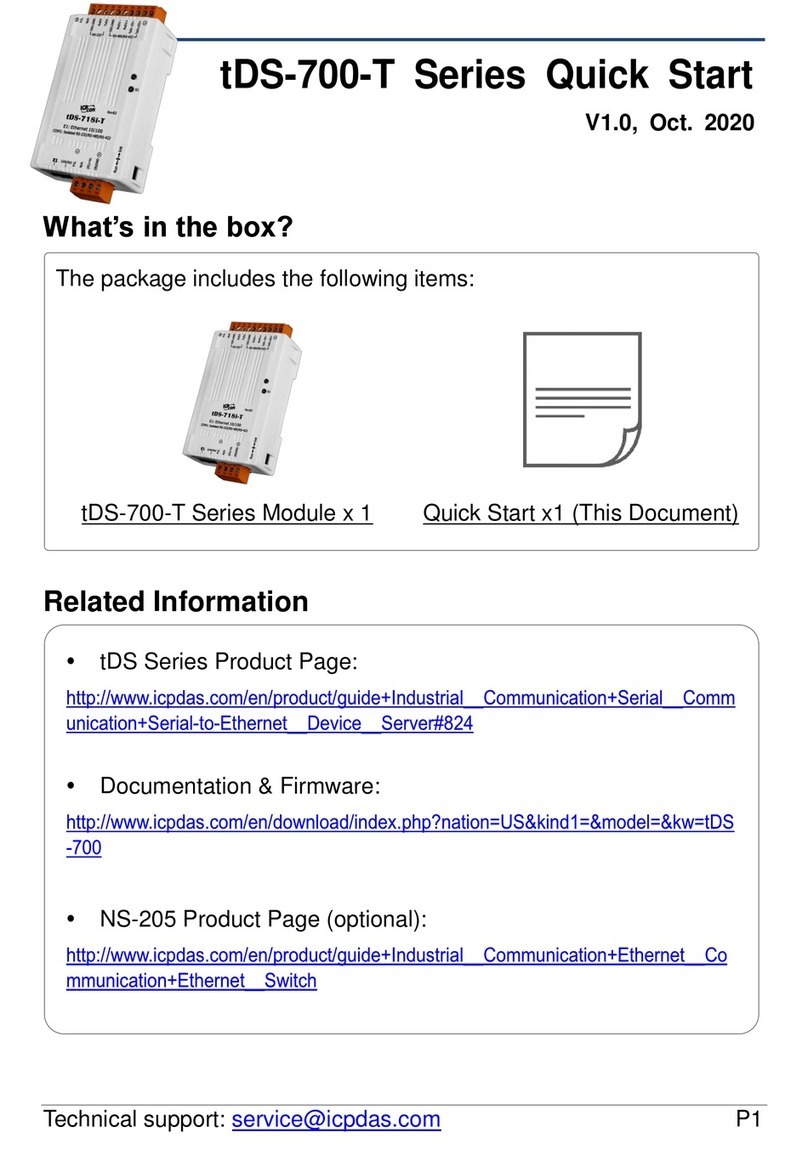
ICP DAS USA
ICP DAS USA tDS-700-T Series quick start
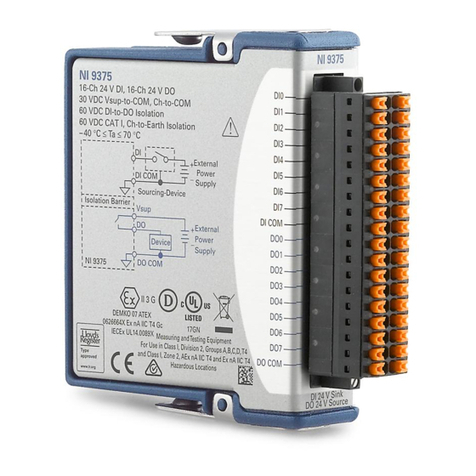
National Instruments
National Instruments NI 9375 Getting started guide
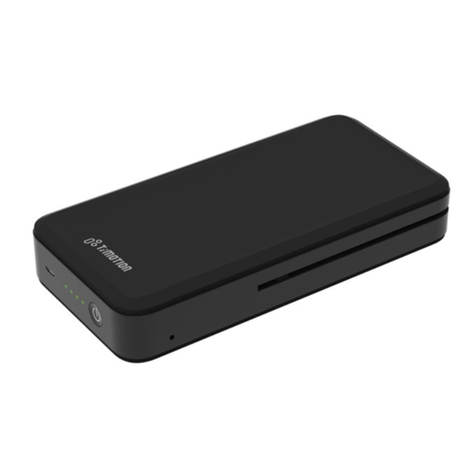
Timotion
Timotion TBB9 user manual
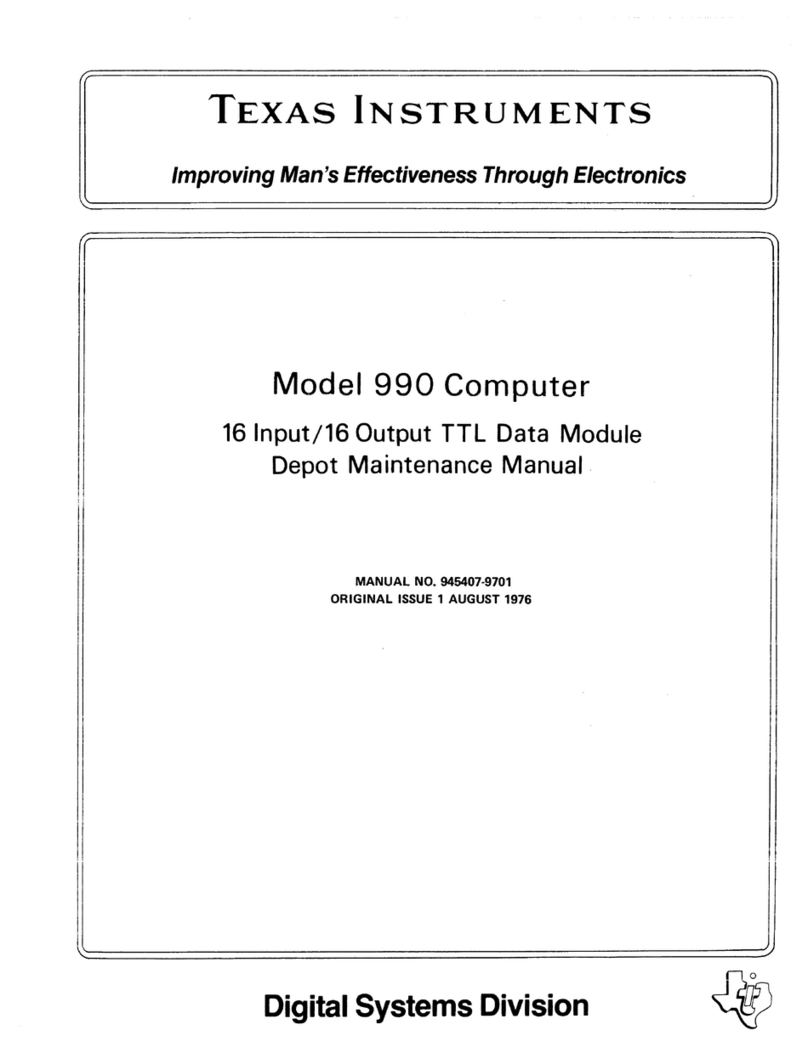
Texas Instruments
Texas Instruments 990 Maintenance manual
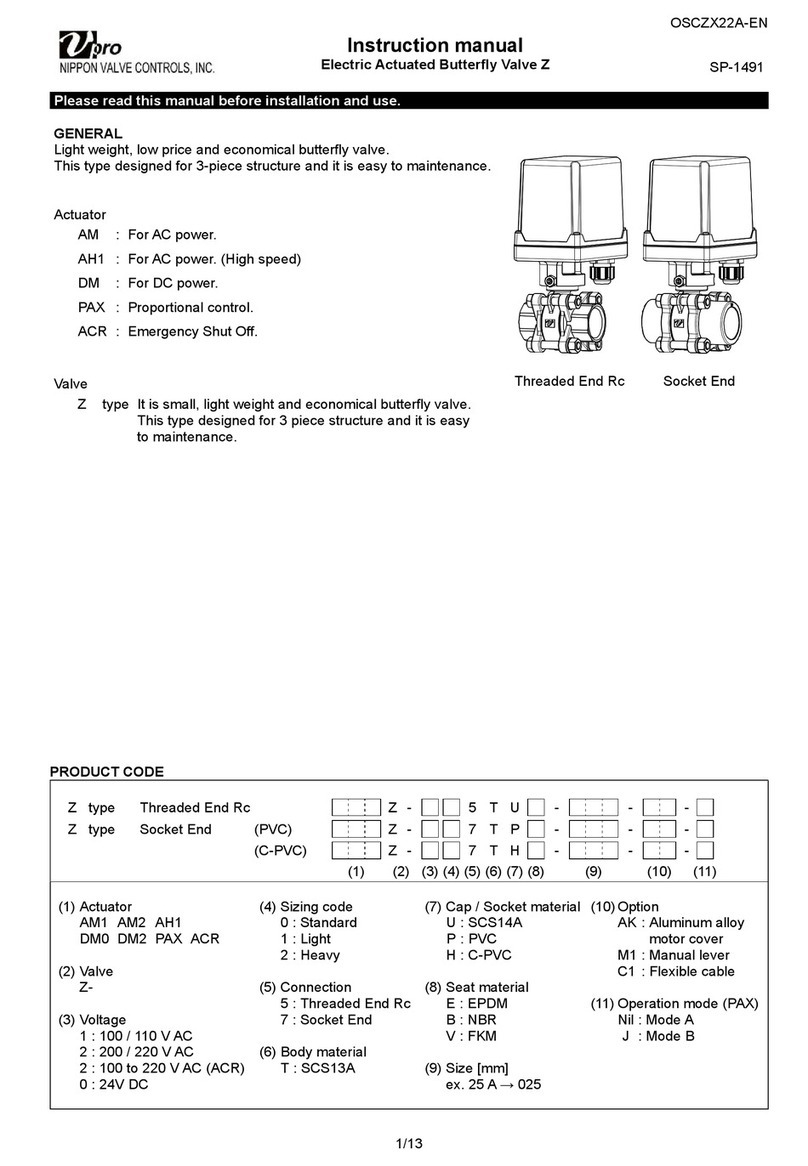
NIPPON VALVE CONTROLS
NIPPON VALVE CONTROLS SP-1491 instruction manual
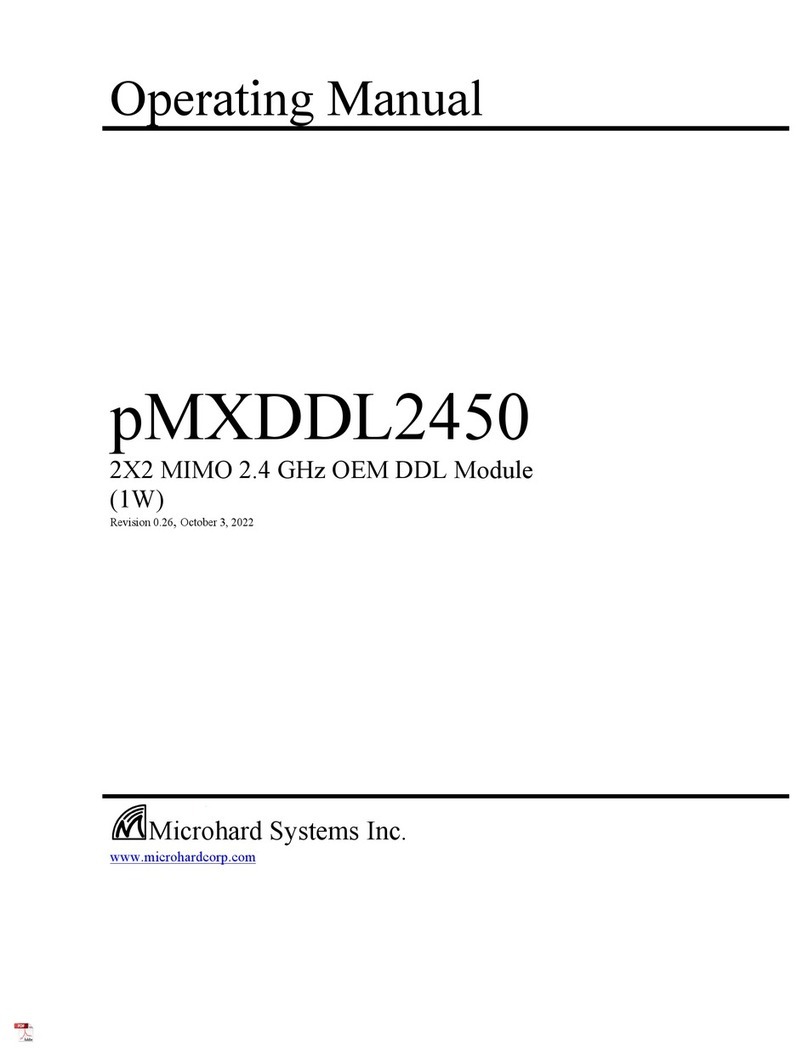
Microhard Systems
Microhard Systems pMXDDL2450 operating manual

Emerson
Emerson FISHER CV500 instruction manual
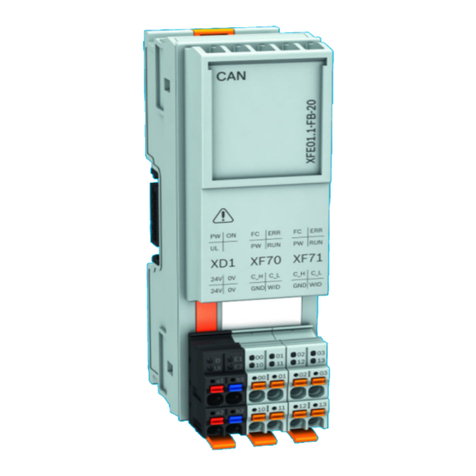
Bosch
Bosch Rexroth IndraControl XFE 01.1 Series operating instructions
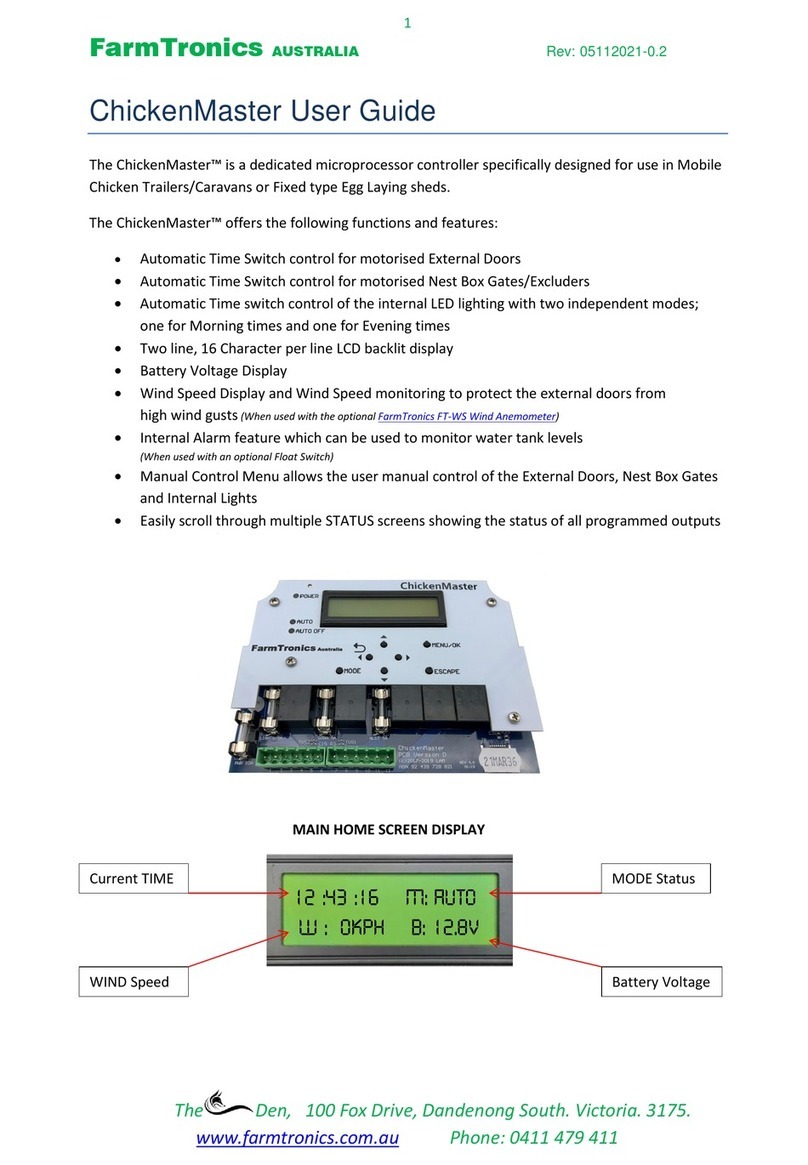
FarmTronics
FarmTronics ChickenMaster user guide
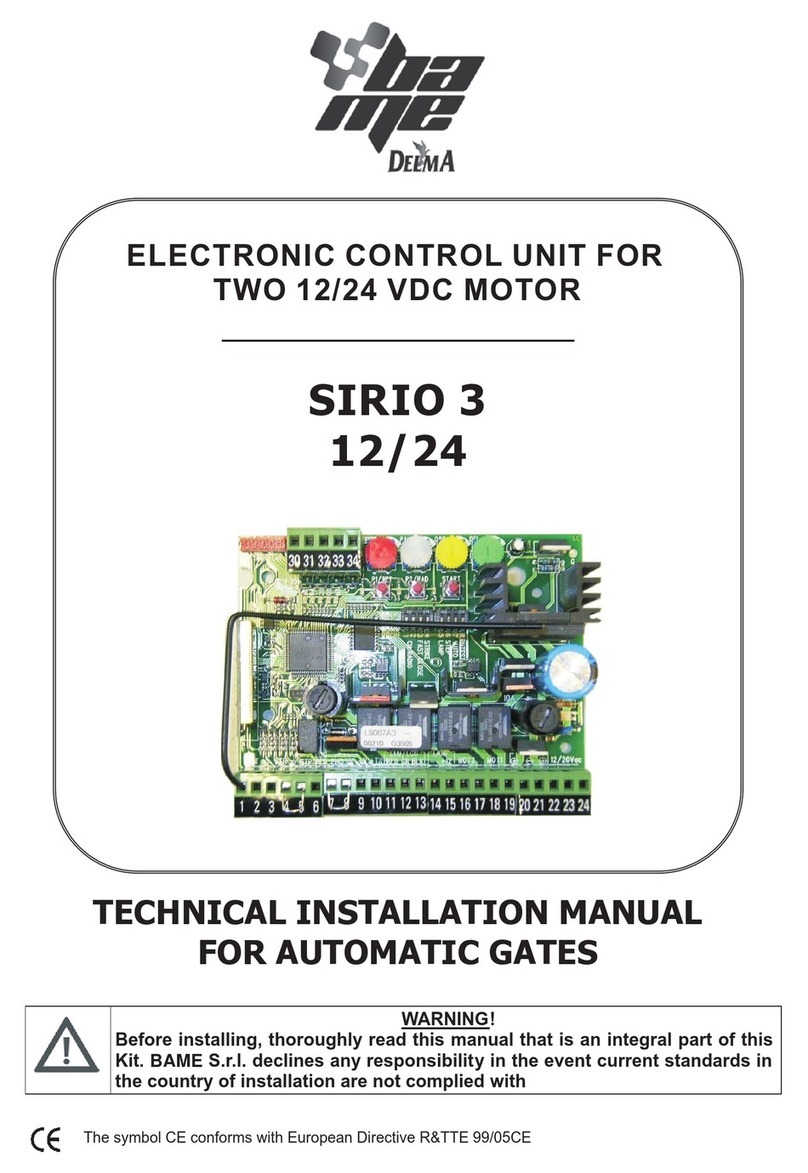
Delma
Delma SIRIO 3 Technical installation manual
